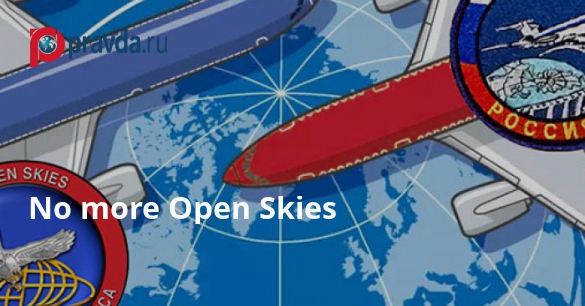On January 15, the Russian Foreign Ministry released a statement announcing the start of domestic procedures to withdraw from the Open Skies Treaty. Another arms control agreement may thus be terminated.
USA withdraws from the treaty first
In November of 2020, the United States officially pulled out from the Open Skies Treaty. Before the move, Washington had repeatedly accused Russia of non-compliance with the agreement. In particular, the Americans claimed that Russia restricted flights over the Kaliningrad enclave, as well as in the ten-kilometer corridor along the borders of Abkhazia and South Ossetia.
In 2014, a campaign was launched in the United States to restrict inspection flights of Russian aircraft. The Americans in particular said that the new Russian aircraft were outfitted with more advanced digital equipment that enabled them to obtain more information vs. the volume of information that American aircraft collected when flying over Russia.
During Barack Obama’s presidency, Russian inspectors were not allowed to conduct several flights over the territory of the United States. During the presidency of Donald Trump, the US shaped its course to exit the treaty, including other arms control agreements.
The ball is on the side of the West
Konstantin Kosachev, the head of the Federation Council committee on international affairs, noted that the treaty could have been saved after USA’s withdrawal from it if other parties to the treaty – primarily the members of the North Atlantic Alliance – had wanted to save it. According to him, they could have decided not to transfer information collected during their inspection flights over Russia to the Americans.
As Kosachev noted on his Facebook page, it needed to be confirmed additionally, since Article 4 of the North Atlantic Treaty reads as follows:
“The Parties will consult together whenever, in the opinion of any of them, the territorial integrity, political independence or security of any of the Parties is threatened.”
Article 8 then says:
“Each Party declares that none of the international engagements now in force between it and any other of the Parties or any third State is in conflict with the provisions of this Treaty, and undertakes not to enter into any international engagement in conflict with this Treaty.”
In his opinion, NATO countries preferred to retain their obligations within the framework of the alliance, rather than the Open Skies Treaty.
The One Skies Treaty was concluded in 1992 by 23 member states of the Organization for Security and Cooperation in Europe. In accordance with the treaty, the states that signed the treaty undertook to make observation flights over their territories possible based on established quotas. The flights are conducted on a notification basis. The treaty provides for “passive” (for the observed party) and “active” (for the observing party) annual quotas.
- US President Dwight Eisenhower had once spoken in favour of such flights, but the USSR declined the idea then. The initiative was implemented only almost four decades later.
- Russia ratified the treaty in 2001, but the country took part in it from the moment of signing. At the moment, 35 states are members of the Open Skies Treaty.
While the negotiation process is underway, there is still a chance to save the agreement. However, it is up to European allies of the United States to set forth such an initiative, which is unlikely to materialize.
South Africa Today – World News Russia













